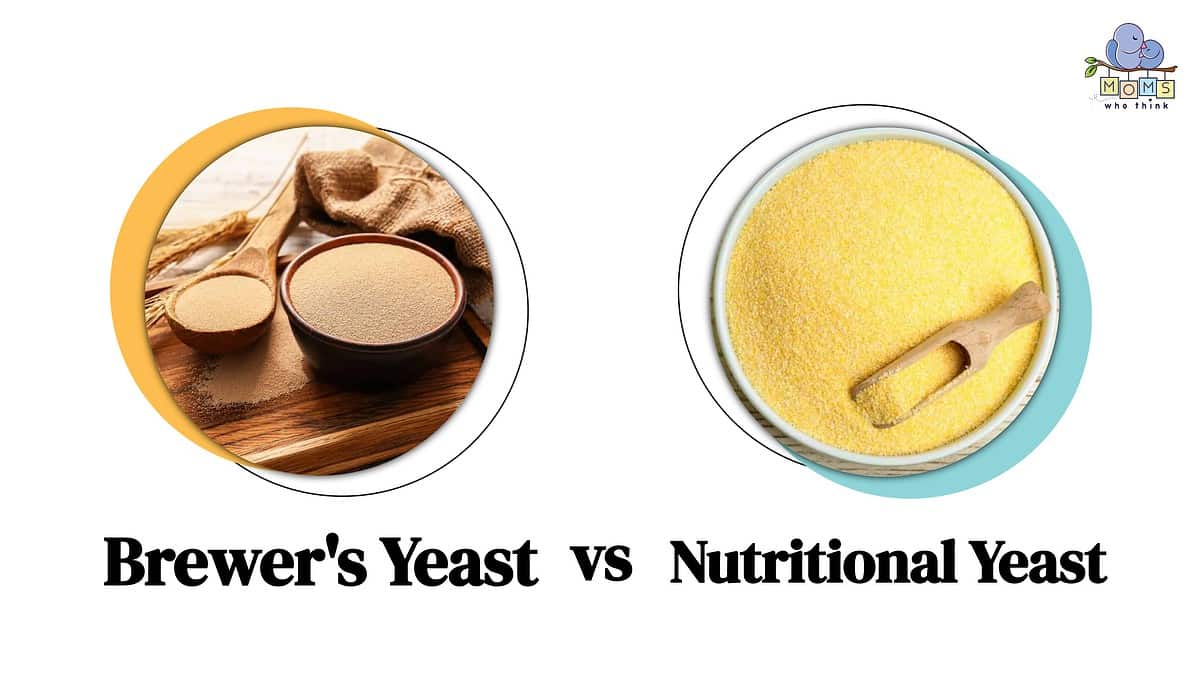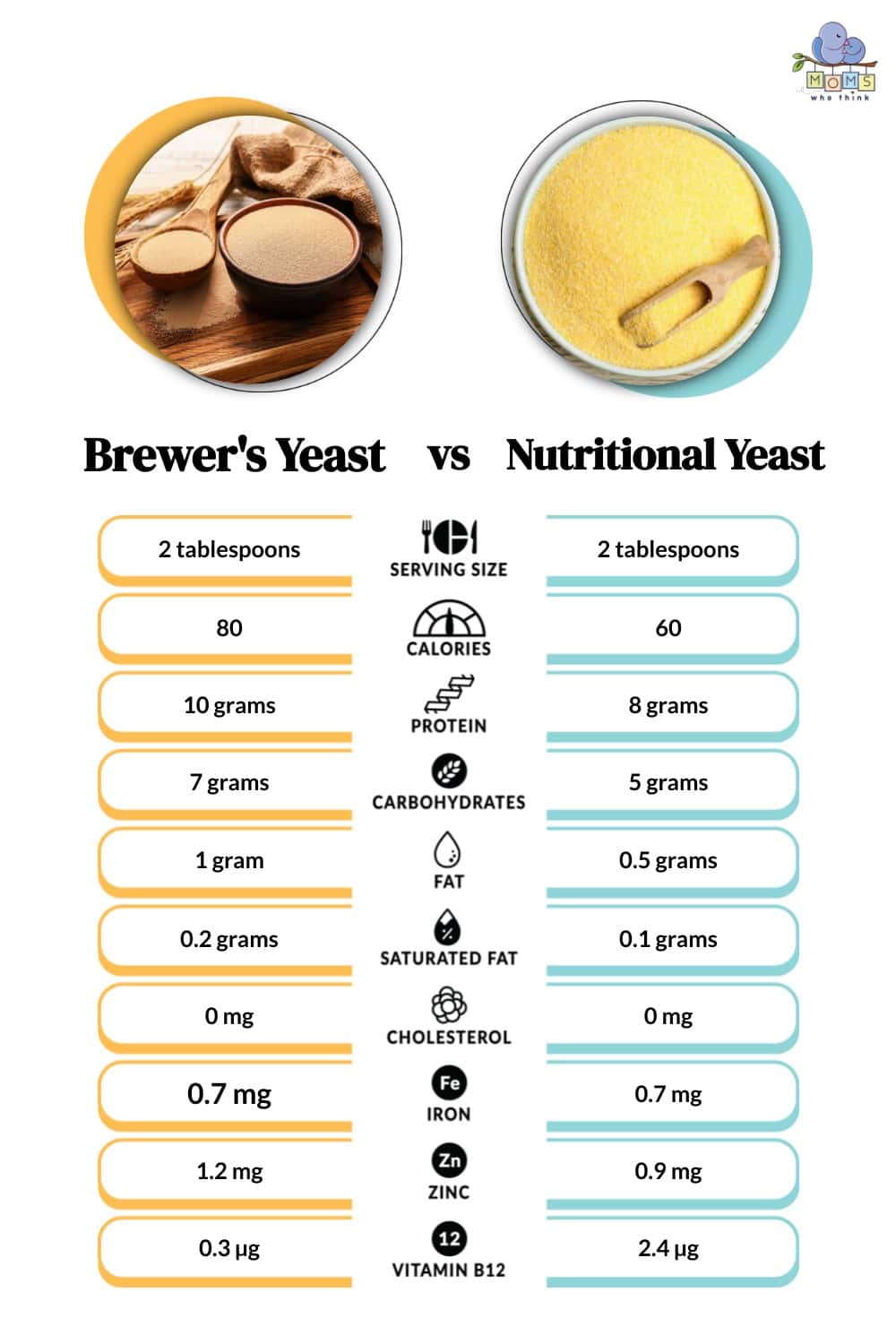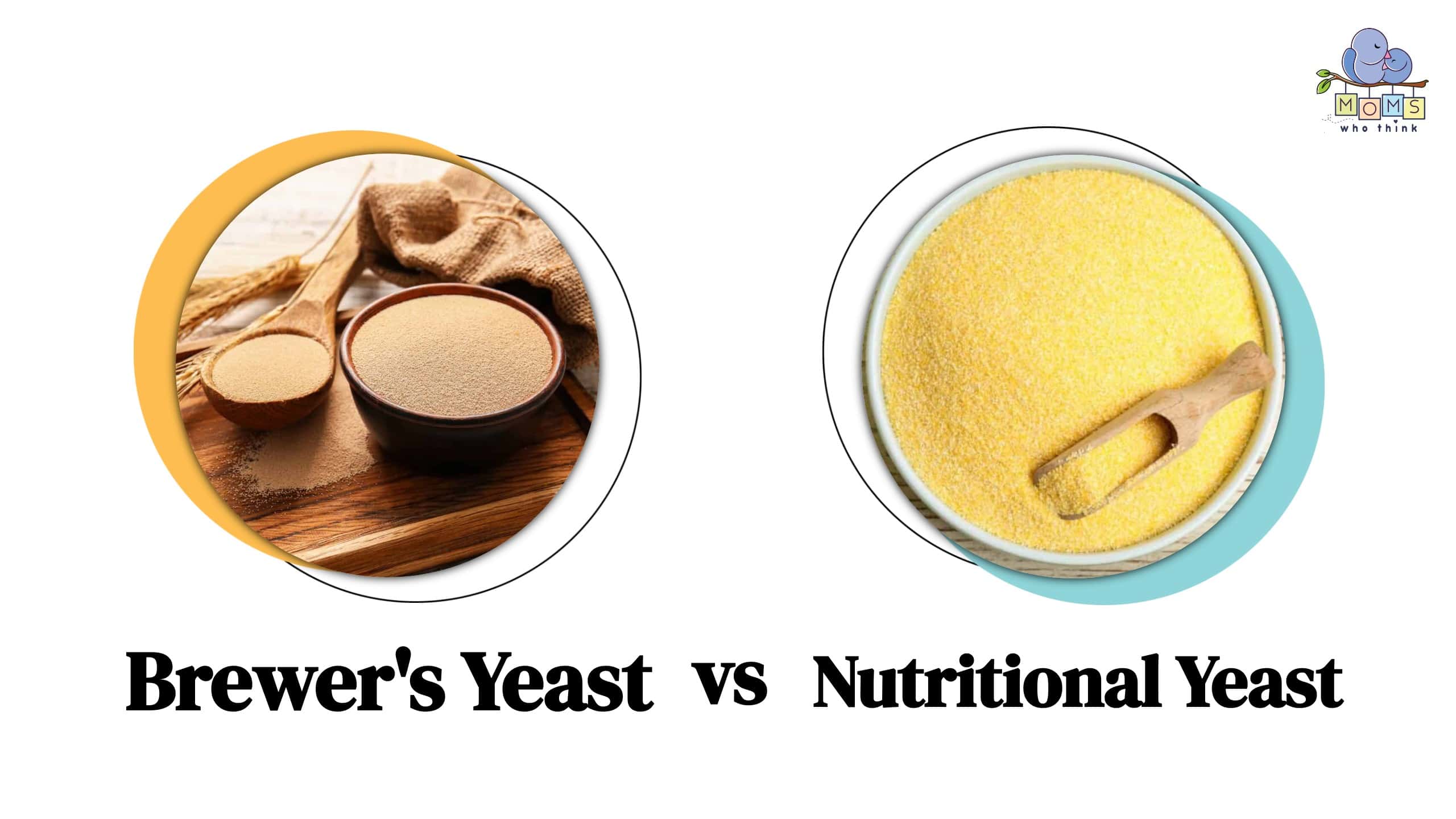Brewer's Yeast vs. Nutritional Yeast: What's the difference? It's key to know the difference between active yeast and deactivated yeast. Understanding how they are made and their purpose can give you an idea of which to use.
Beer yeast came out in the sixteenth and seventeenth centuries. It became popularized when beer making went from being made in homes to being made in pubs. Nutritional yeast has a much more recent history. It came out in the 1950s. However, yeast, in general, came out during the ancient Egyptians. They used it for making bread.
This guide explores the differences between brewer's and nutritional yeast. We look at what makes them unique and how they can be used as health supplements from a macro and micro point of view. We also help you uncover the different ways to use them.
- The must-have convenient reference guide for every home cook!
- Includes more than 8,000 substitutions for ingredients, cookware, and techniques.
- Save time and money on by avoiding trips to grab that "missing" ingredient you don't really need.
Brewer's Yeast vs. Nutritional Yeast: How They Are Made

Brewer's yeast is an active live yeast, compared to nutritional yeast, a deactivated yeast. Brewer's yeast is used for brewing beer. During that process, the yeast is killed and becomes a dietary supplement because it has a rich source of minerals.
On the flip side, nutritional yeast is a deactivated yeast. However, it's also used for dietary purposes. And it's also sold as a nutritional or health food in grocery stores.
One of the commonalities between these kinds of yeast is that they are made with Saccharomyces cerevisiae. This is a single-celled fungus. Not to worry, these microorganisms are deactivated before they are sold to the public. There is no chance you can get sick from them.
While brewer's and nutritional yeast have the same species, it doesn't mean they have the same purpose or nutritional value.
The specific progress for making brewer's yeast involves growing the yeast on grains like malted barley. Additionally, after fermenting the beer, the yeast is taken out of the beer and dried with rollers.
Nutritional yeast is primarily grown for dietary purposes. It doesn't have a dual purpose like brewer's yeast has. Nutritional yeast is often grown on beets or cane sugar molasses. Learning how they offer nutritional differences can also give you an idea of which one you prefer to take.
The Nutritional Differences
While brewer's yeast and nutritional yeast have similarities, they have different dietary values because they are made with other ingredients.
- The must-have convenient reference guide for every home cook!
- Includes more than 8,000 substitutions for ingredients, cookware, and techniques.
- Save time and money on by avoiding trips to grab that "missing" ingredient you don't really need.
For example, brewer's yeast has thiamine, riboflavin, niacin, and folic acid. Each of these helps support the immune system. Niacin, in particular, helps suppress inflammation and improve blood circulation. Brewer's yeast is also loaded with fiber and protein. The fiber aids in digestion, while protein is great for muscle development.
Here are other nutrients you can find in brewer's yeast
- Magnesium
- Selenium
- Potassium
- Chromium
- Zinc
Nutritional yeast also contains vitamins and minerals that promote overall health. You'll also find thiamine, riboflavin, niacin, and folic acid. In addition, you'll also find that it has protein and fiber.
The most notable vitamin you'll find in nutritional yeast that you won't find in brewer's yeast is vitamin B-12. It helps keep your body's blood and nerve cells healthy.
The Best Way to Take Brewer's Yeast and Nutritional Yeast
If you want to get the best value out of either yeast, you'll find that you can pick up either kind of yeast at the grocery store or a local pharmacy.
You'll find both in capsule form and in powder form. If you like mixing yeast with other nutrients like fruits and vegetables, then the powder might be your best choice. You can also add a sprinkle of it to your salads, smoothies, or other kinds of food to give whatever you're eating more nutritional value.
Choosing either supplement can help you get the most nutrients from your eating. If you're wondering what the best option is or offers the most nutrition, it ultimately comes down to what you're looking for. For more B12, consider nutritional yeast. If you don't mind what nutritional value you get, try either one and see which one you like the taste of more.

Brewer's Yeast vs. Nutritional Yeast: Which Should You Choose?
If you're looking for more nutritional value, nothing compares to brewer's and nutritional yeast. They each offer something of importance when it comes to nutrients. They help you get the most minerals, vitamins, and B12 if you take nutritional yeast.
There are various ways to consume yeast without taking a capsule or eating the powder alone. If you're wondering about the better choice, it ultimately depends on what you're trying to get from these supplements. However, you'll ultimately find that these supplements pack a punch in nutrition, regardless of which one you choose.
- The must-have convenient reference guide for every home cook!
- Includes more than 8,000 substitutions for ingredients, cookware, and techniques.
- Save time and money on by avoiding trips to grab that "missing" ingredient you don't really need.

